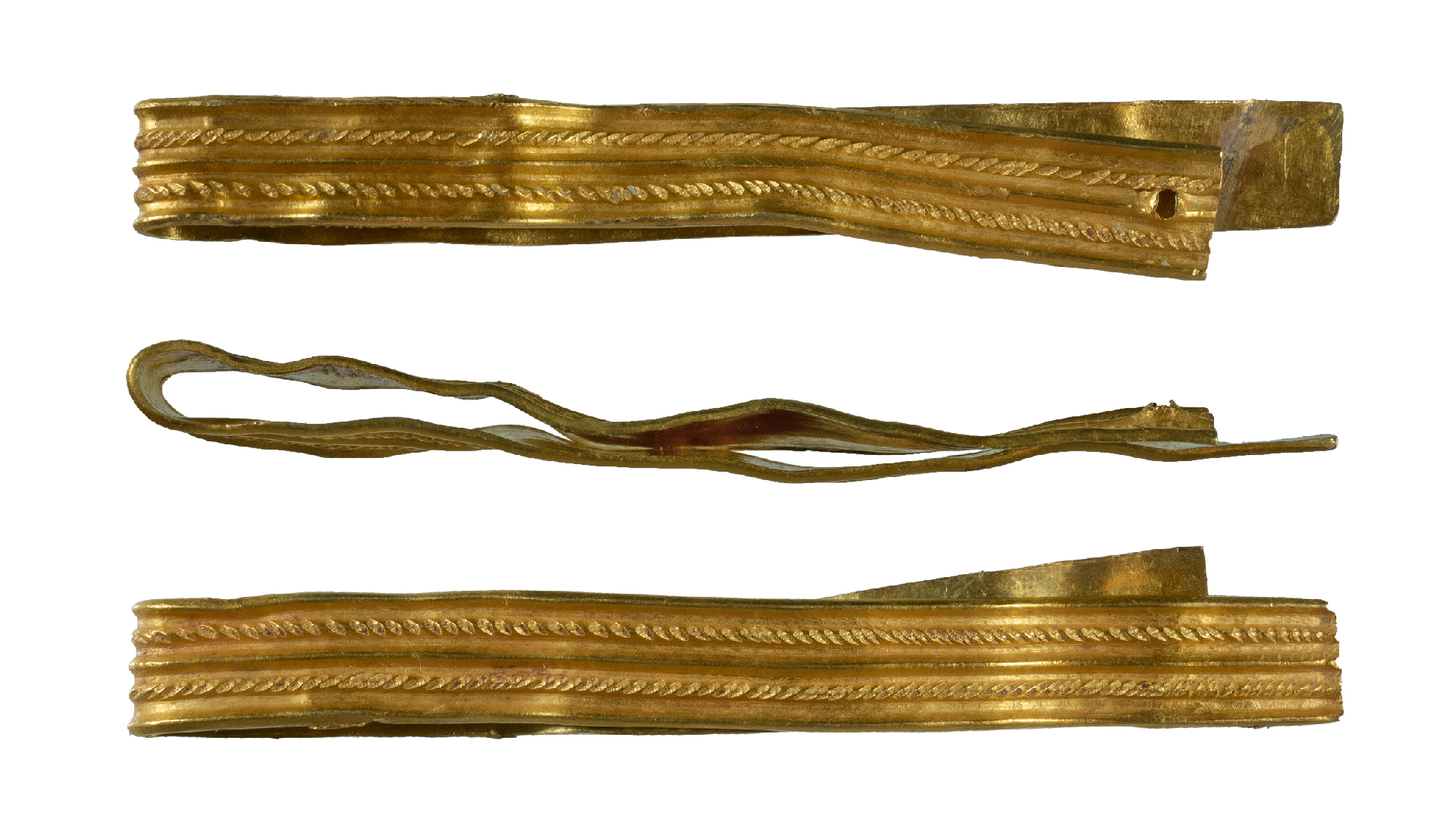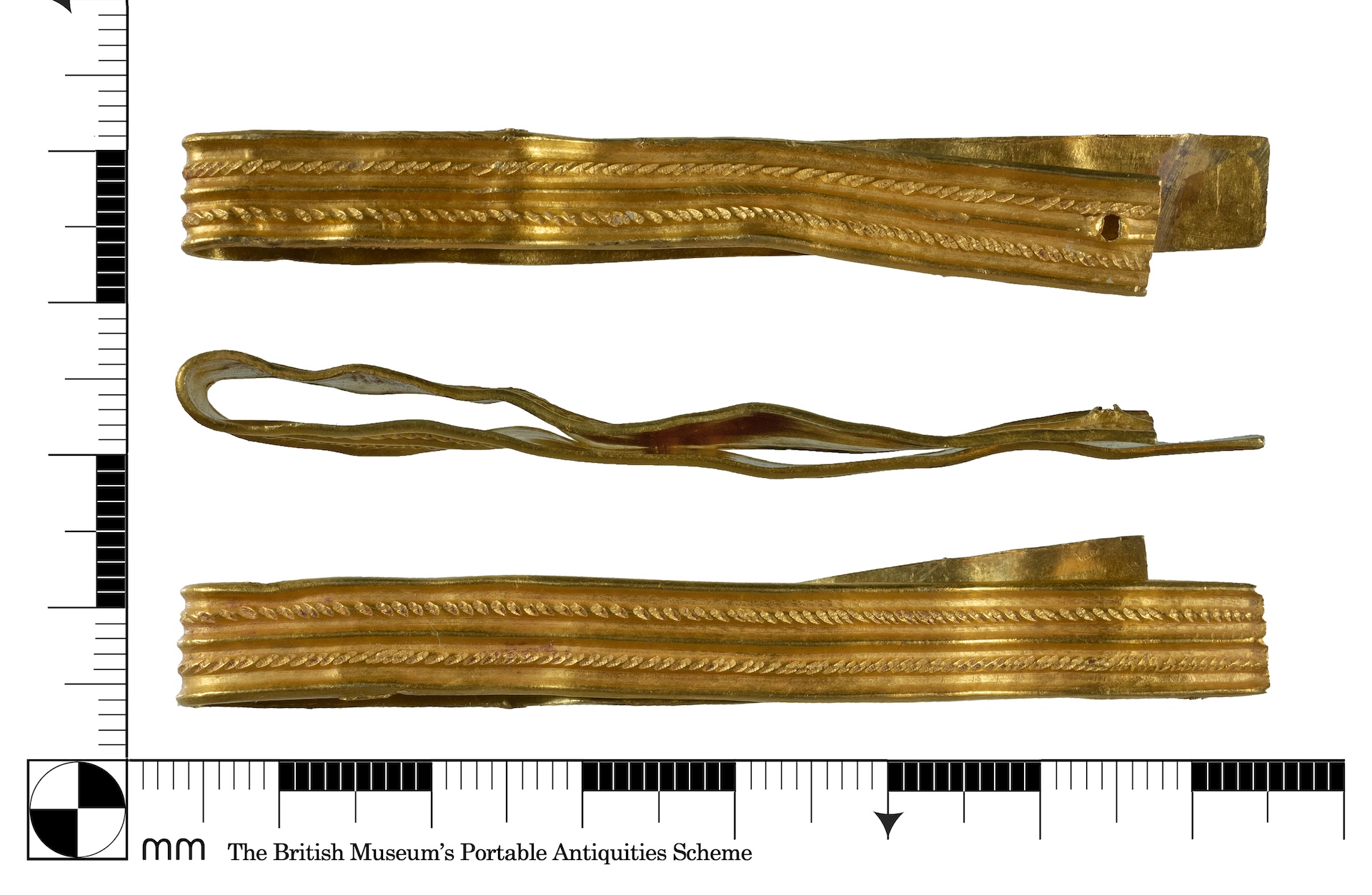Boy finds Roman-era gold military bracelet while walking dog in UK
The newfound bracelet was likely awarded for a feat of valor carried out during Rome's conquest of Britain.

While walking his dog with his mom, a 12-year-old boy in the U.K. made an unexpected discovery in a field — not a stick for his dog or an interesting rock, but a first-century gold bracelet from Roman Britain.
Unlike most other jewelry from the Roman era, the lustrous bracelet probably wasn't worn by a woman, researchers later surmised. Instead, it likely belonged to a man who had received the accessory as a military honor, likely an "award for bravery," according to a statement from the local Chichester District Council.
The cuff bracelet has been described as "exceptional" and "relatively rare in Roman Britain," especially because it's crafted from gold, according to the statement.
The boy and his mom, Rowan and Amanda Brannan, were walking the family's dog in Pagham, a coastal village in West Sussex, England, in 2022 when Rowan noticed the bracelet. They took it to a local officer affiliated with the Portable Antiquities Scheme, a project managed by the British Museum that catalogs archaeological finds discovered by the public in the U.K.
Related: 8-year-old girl unearths Stone Age dagger by her school in Norway
A newly announced analysis of the bracelet revealed that it was made from sheet gold with raised moldings, and it dates to the first century A.D., not too long after Roman emperor Claudius invaded Britain in A.D. 43.

The cuff, which is now smooshed in a folded position, measures nearly 3 inches (7.1 centimeters) long, although it would be longer if it were unfolded. Known as an armilla-type bracelet, these "dona militaria" or "military awards" were given for feats of valor carried out during Rome's conquest of Britain, according to the Portable Antiquities Scheme. Later, these feats were rewarded with money, rather than jewelry.
Sign up for the Live Science daily newsletter now
Get the world’s most fascinating discoveries delivered straight to your inbox.
The discovery of the bracelet bolsters existing evidence that the region had Roman soldiers, either active or retired, at the time.
The Portable Antiquities Scheme declared that the bracelet was "treasure," or an artifact made of gold or silver that's at least 300 years old. Following its discovery, the bracelet was acquired by the Novium Museum, which holds collections for the District of Chichester. It will go on public display starting Sept. 10.
"Acquiring this bracelet for The Novium Museum's collection will offer our visitors additional insights into ancient practices," Adrian Moss, councilor and leader of the Chichester District Council, said in the statement. "In particular, it will help shed light on military attitudes, including how Roman soldiers were rewarded for their bravery, gallantry and service, particularly with regards to the Roman invasion of Britain in AD 43."
He also congratulated 12-year-old Rowan on the find. "It really goes to show that you never know what you might discover by keeping your eyes peeled when out and about!"

Laura is the archaeology and Life's Little Mysteries editor at Live Science. She also reports on general science, including paleontology. Her work has appeared in The New York Times, Scholastic, Popular Science and Spectrum, a site on autism research. She has won multiple awards from the Society of Professional Journalists and the Washington Newspaper Publishers Association for her reporting at a weekly newspaper near Seattle. Laura holds a bachelor's degree in English literature and psychology from Washington University in St. Louis and a master's degree in science writing from NYU.









